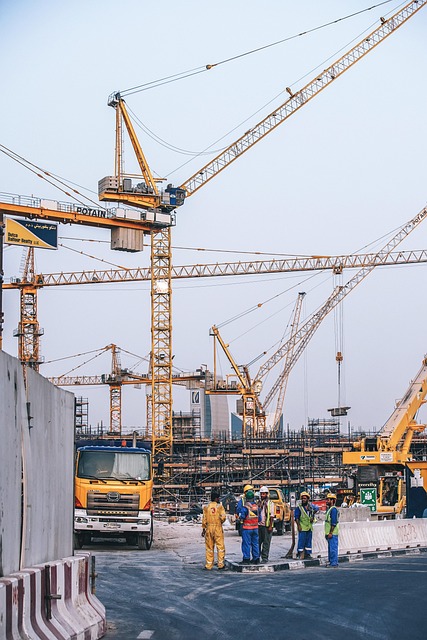Precision underground mapping leverages cutting-edge technologies like ground-penetrating radar (GPR) and electromagnetic location systems to create detailed 3D representations of buried infrastructure, enhancing safety and efficiency in construction and maintenance. Choosing the right equipment with advanced features ensures accurate mapping, minimizing damage to vital services. Adhering to best practices, including personnel training, advanced equipment use, and safety protocols, is crucial for successful and precise underground mapping operations.
In today’s digital era, accurate identification of buried utilities is paramount for safe and efficient infrastructure management. This article delves into the world of precision underground mapping, exploring essential tools and techniques for professionals. We guide you through the process from understanding the basics to selecting the right equipment for reliable results. Discover cutting-edge advanced technologies shaping this field and learn best practices with safety measures to ensure optimal precision underground mapping operations.
Understanding Precision Underground Mapping: The Basics
Precision underground mapping, a specialized technique within the realm of utility location, involves highly accurate detection and visualization of buried infrastructure. It goes beyond conventional methods by employing cutting-edge technology to create detailed 3D representations of underground utilities, such as pipes, cables, and wires. This advanced process ensures that construction projects or infrastructure maintenance can be carried out safely and efficiently without damaging vital services.
The basics of precision underground mapping include utilizing ground-penetrating radar (GPR), electromagnetic location devices, and GPS technology. These tools send signals into the ground, capturing data that is then processed to generate precise maps. GPR, for instance, uses radar pulses to penetrate the earth’s surface, identifying different material properties, including those of utility lines. By combining these technologies, professionals can achieve remarkable accuracy in mapping, enabling them to navigate complex underground landscapes with ease.
Choosing the Right Equipment for Reliable Results
Choosing the right equipment is paramount when it comes to achieving accurate and reliable results in precision underground mapping. Professionals in this field rely on advanced technologies to visualize and map buried utilities, ensuring safe and efficient infrastructure management. High-quality devices such as ground-penetrating radar (GPR) and electromagnetic location systems are instrumental in this process.
GPR, for instance, uses radio waves to penetrate the earth’s surface, generating detailed images of subsurface structures. This non-invasive technique provides real-time data, allowing for precise identification of utility lines, pipes, and cables. Meanwhile, electromagnetic location systems emit low-power electromagnetic fields to detect metal objects, making them ideal for localizing metallic utilities like water mains and gas pipelines. Selecting equipment with advanced features and proven performance ensures accurate mapping, minimizes the risk of damage during excavation, and ultimately contributes to successful infrastructure projects.
Advanced Technologies in Professional Utility Mapping
The evolution of utility mapping has seen a significant shift towards advanced technologies, offering unparalleled accuracy and efficiency in precision underground mapping. Professional-grade equipment now incorporates cutting-edge tools such as ground-penetrating radar (GPR) and electromagnetic location systems. These innovative methods enable detailed imaging of underground infrastructure with remarkable clarity, allowing for the precise identification and documentation of pipes, cables, and other utilities.
By leveraging these advanced technologies, professionals can non-invasively map complex utility networks, reducing excavation risks and costs associated with traditional mapping methods. This not only enhances safety but also streamlines project timelines, making it an indispensable tool in modern construction and infrastructure development projects.
Best Practices and Safety Measures for Efficient Operations
When conducting precision underground mapping, adhering to best practices and safety measures is paramount for efficient operations. Begin by ensuring thorough training for all personnel involved in the process, as this minimizes errors and enhances safety. Utilizing state-of-the-art equipment with advanced features, such as real-time data visualization and accurate depth sensing, improves mapping accuracy significantly. Regular calibration and maintenance of these tools are essential to guarantee optimal performance.
Moreover, establishing clear communication protocols among team members avoids misunderstandings and ensures everyone is aligned. Prioritize safety by conducting thorough site assessments, identifying potential hazards, and implementing appropriate mitigation strategies. Wear appropriate personal protective equipment (PPE) and maintain a clean, organized work area to minimize tripping hazards. Regularly reviewing and updating mapping protocols based on project feedback and technological advancements helps in delivering precise results.
Precision underground mapping is no longer a niche concern but an essential practice for modern infrastructure management. By investing in professional-grade equipment and adhering to best practices, utility companies can ensure efficient, safe, and reliable operations. Advanced technologies such as ground-penetrating radar and LiDAR have revolutionized the industry, offering unprecedented accuracy and detail. With these tools, professionals can navigate complex underground landscapes, avoid costly mistakes, and foster a more sustainable future by minimizing damage during construction projects.
